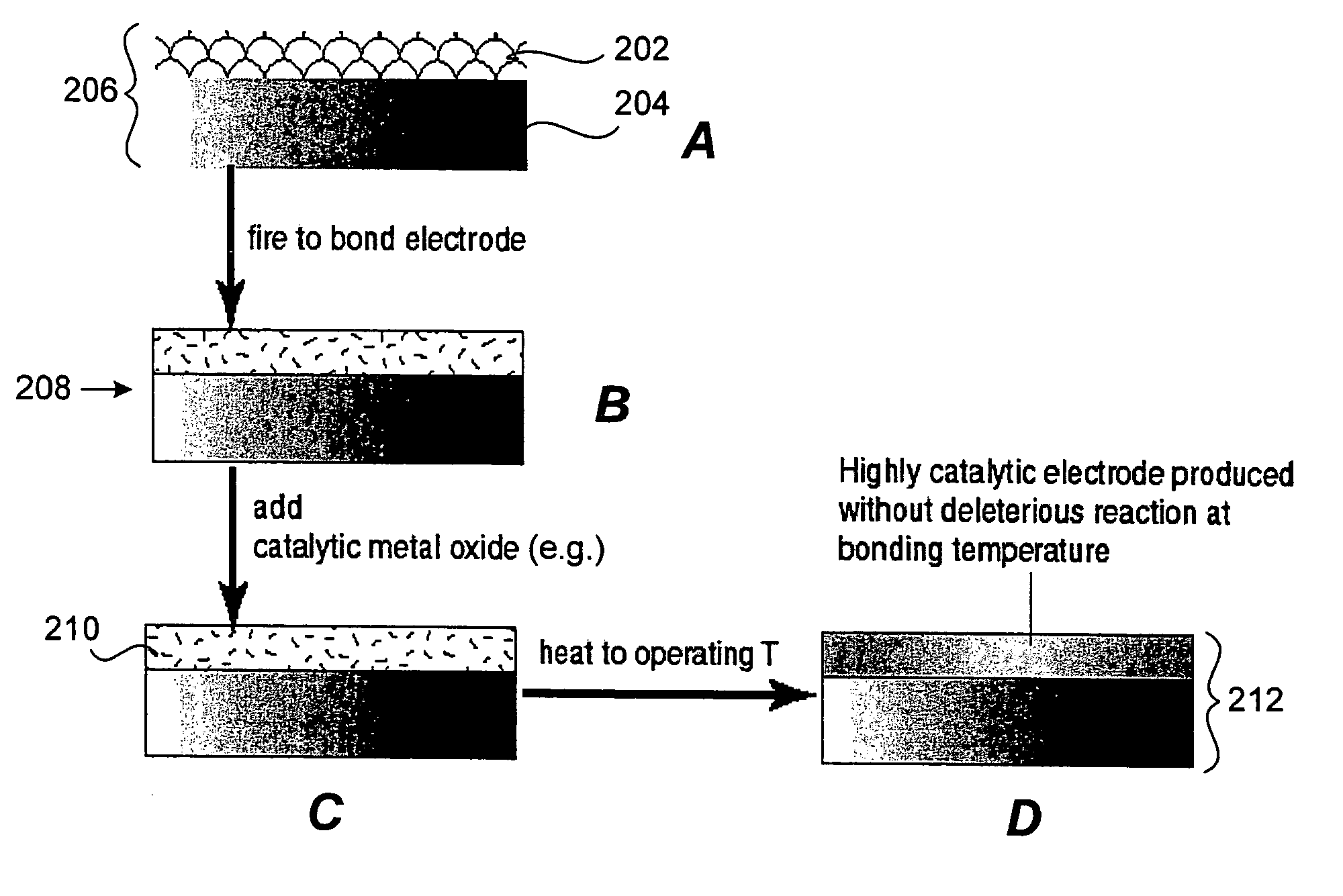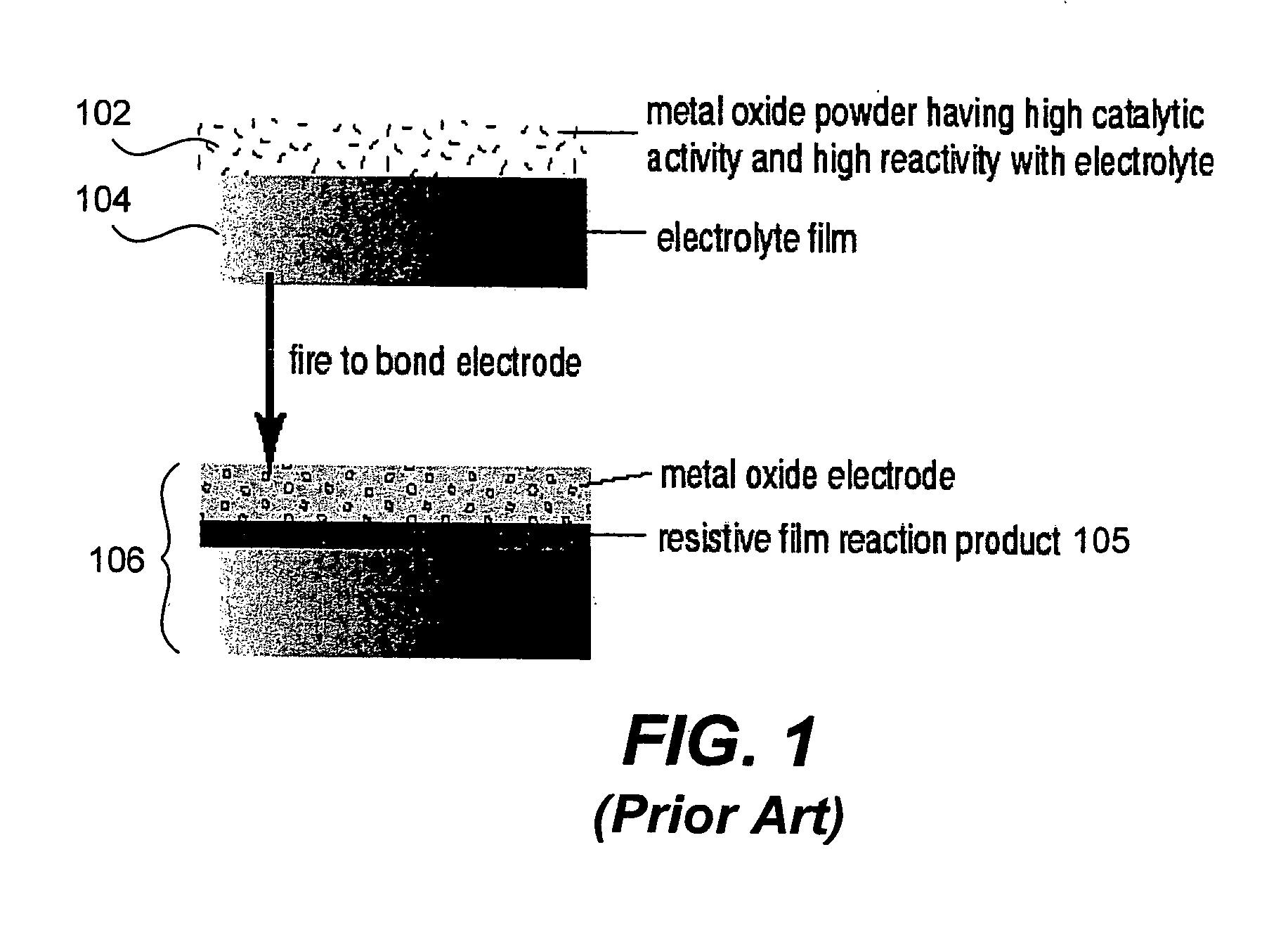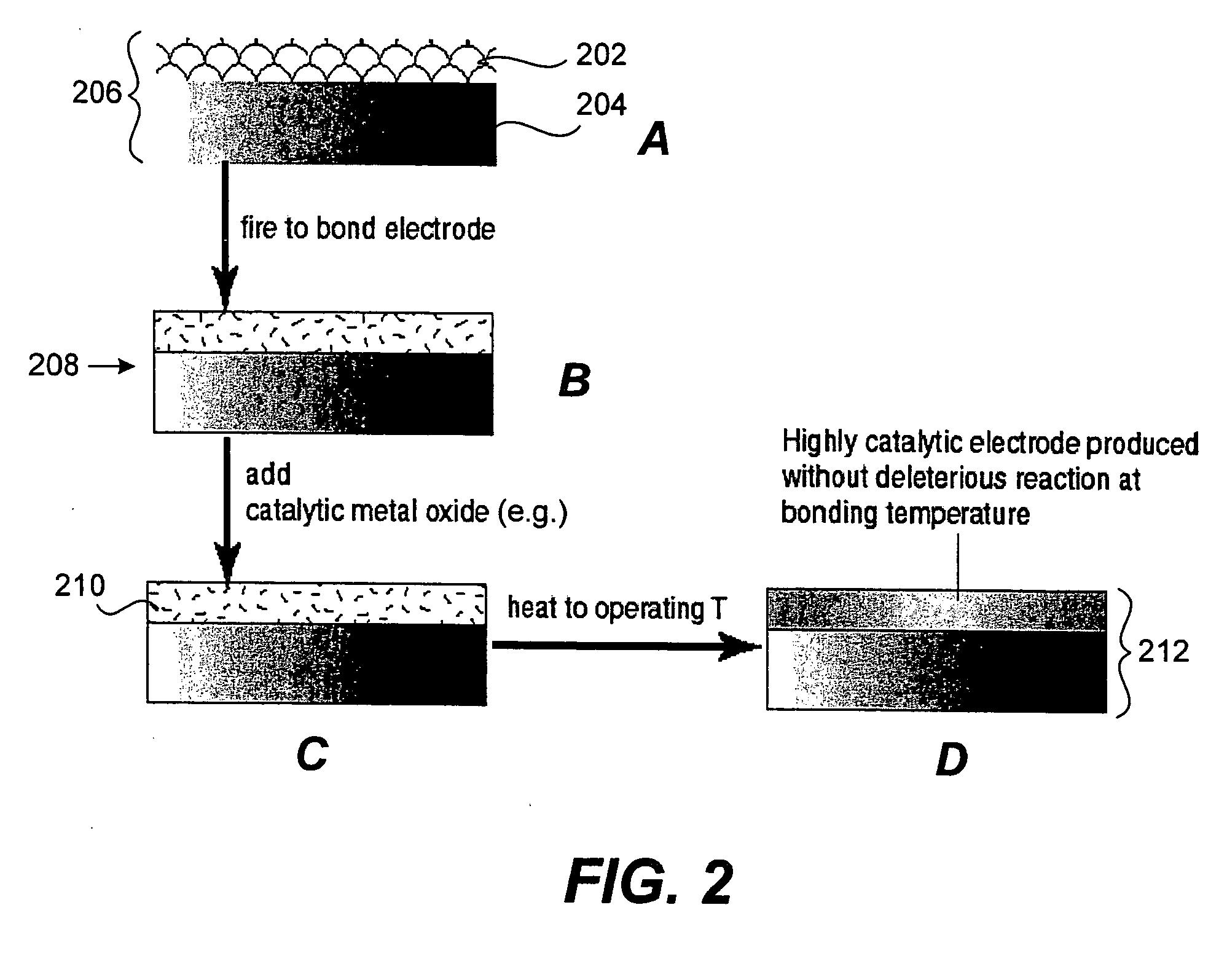Solid state electrochemical composite
a solid-state electrochemical and composite technology, applied in the field of solid-state electrochemical devices, can solve the problems of affecting the performance of ionic devices, forming deleterious resistive films, and substantial efficiency losses, and achieves the effects of high electronic conductivity, sufficient catalytic activity, and high electrical conductivity
- Summary
- Abstract
- Description
- Claims
- Application Information
AI Technical Summary
Benefits of technology
Problems solved by technology
Method used
Image
Examples
example
[0053] The following example illustrates aspects and features of a specific implementation in accordance with the present invention. It should be understood the following is representative only, and that the invention is not limited by the detail set forth in this example.
[0054] A composite structure in accordance with one embodiment of the present invention was prepared by the following proceedure. 40 vol % of 325 mesh, 410L stainless steel powder was mixed with 60 vol % polymer (acrylic plus polyethylene glycol (M.W. 6,000)). This was dried at ˜100 C to remove water, ground, and pressed into a 38 mm diameter disk approximately 2 mm thick. The disk was immersed in distilled water for 4 hours to remove the polyethylene glycol. The disk was fired to 900 C in an alumina tube furnace under flowing 4% H2 / He gas. The resulting disk was strong enough to handle. A paint consisting of polyethylene glycol, acrylic beads (as pore former), and 30 vol % of 8 mol % yttria stabilized zirconia po...
PUM
| Property | Measurement | Unit |
|---|---|---|
| thick | aaaaa | aaaaa |
| thick | aaaaa | aaaaa |
| thick | aaaaa | aaaaa |
Abstract
Description
Claims
Application Information
 Login to View More
Login to View More - R&D
- Intellectual Property
- Life Sciences
- Materials
- Tech Scout
- Unparalleled Data Quality
- Higher Quality Content
- 60% Fewer Hallucinations
Browse by: Latest US Patents, China's latest patents, Technical Efficacy Thesaurus, Application Domain, Technology Topic, Popular Technical Reports.
© 2025 PatSnap. All rights reserved.Legal|Privacy policy|Modern Slavery Act Transparency Statement|Sitemap|About US| Contact US: help@patsnap.com



